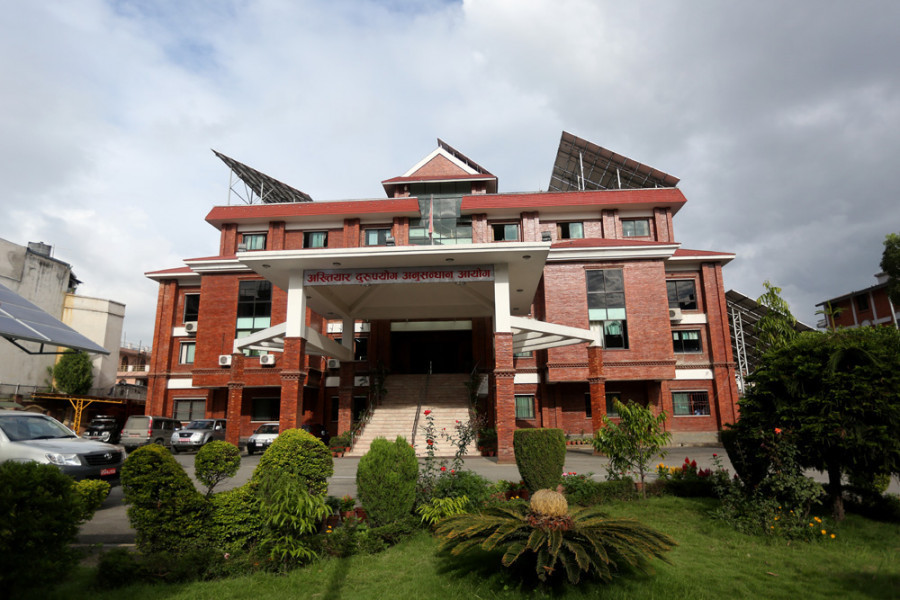Editorial
Net the ‘big fish’
The CIAA must begin cracking down on large-scale corruption issues with a system-based approach.
It's been almost a year since Ramhari Subedi, a non-gazetted official at the Kalanki Land Revenue Office, committed suicide after spending 42 days in custody after the Commission for Investigation of Abuse of Authority (CIAA) accused him of taking Rs1,000 in bribe from a service seeker. Subedi was acquitted posthumously by the Special Court on July 14, a fact that came to light only last week. Having driven a public servant to self-destruction, the commission, on its part, failed to even furnish adequate evidence to support its accusation. All it had to say was that Subedi was caught on CCTV taking the money. Subedi's suicide and the acquittal that followed epitomise the modus operandi of the CIAA over the years, hounding people accused of petty crimes and passing over the crimes of the mighty.
The man under whose leadership the CIAA incarcerated an innocent official on fake charges retired on Sunday. If anything, Nabin Ghimire's stint as the chief commissioner was unremarkable, even controversial. Under Ghimire, the commission continued to lose its independence as a constitutional body mandated to be a corruption watchdog and turned into a government lapdog instead. There is no dearth of Chinese whispers among Kathmandu politicos and intelligentsia that Ghimire played along as cabals within the ruling Nepal Communist Party used the commission as a weapon to silence rabble-rousers within the party itself. But he was nowhere to be seen when the time came to investigate large-scale corruption cases including the purchase of wide-body aircraft and security printing press among others.
To be fair to him, Ghimire is not a lone wolf when it comes to commissioners denting the public image of the anti-graft body; he belongs to the league of the heavyweights who systematically corroded its legitimacy. Lokman Singh Karki, arguably the most controversial in the commission's history, had to be unseated from the position of the chief commissioner by the Supreme Court in 2017 as he did not hold the ‘high moral character’ required to lead the CIAA and did not meet the criteria set to head the constitutional body. Raj Narayan Pathak, who faced a corruption case and had to step down for taking a bribe of Rs7.8 million to settle a dispute over ownership of the Changunarayan-based Nepal Engineering College. Deep Basnyat faced corruption charges over his role in transferring the land at Lalita Niwas in Baluwatar as well as amassing properties illegally, and money laundering, and letting go of several high-profile people who were facing various charges.
Officials of the commission, including the new chief commissioner who takes over in the days to come, have a lot of work to do before they salvage its public image. They must ensure that they help the commission fulfil its mandate rather than work for the political masters who appoint them. There is no end to the current regime trying to use the commission to serve its political interests rather than let it do its constitutionally mandated work. As things stand today, the commission is certain to come under a fresh controversy as the government once again pushes for the third amendment to the CIAA Act which proposes allowing the anti-corruption watchdog to investigate wrongdoings in the private sector. Meanwhile, the public must continue to remain vigilant so that the commission begins cracking down corruption issues with a system-based approach rather than on the whims of those at the helm of power.***
What do you think?
Dear reader, we’d like to hear from you. We regularly publish letters to the editor on contemporary issues or direct responses to something the Post has recently published. Please send your letters to [email protected] with "Letter to the Editor" in the subject line. Please include your name, location, and a contact address so one of our editors can reach out to you.




 7.12°C Kathmandu
7.12°C Kathmandu














